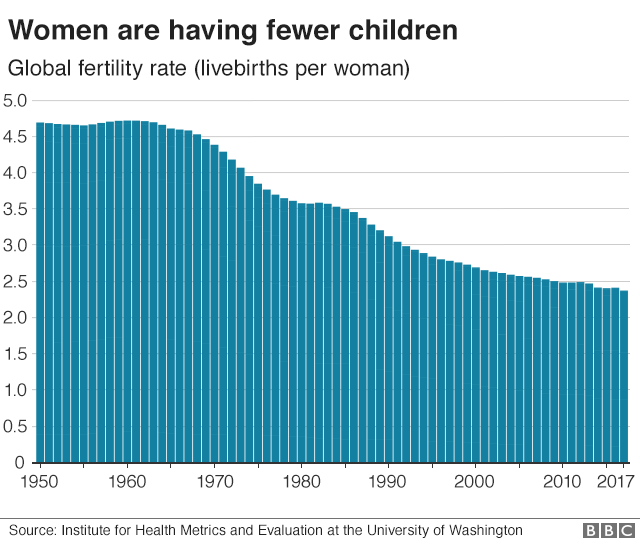Some examples for you.
"The study, published in the Lancet, followed trends in every country from 1950 to 2017.
In 1950, women were having an average of 4.7 children in their lifetime. The fertility rate all but halved to 2.4 children per woman by last year.
But that masks huge variation between nations.
The fertility rate in Niger, west Africa, is 7.1, but in the Mediterranean island of Cyprus women are having one child, on average.
In the UK, the rate is 1.7, similar to most Western European countries."
and
Whenever a country's rate drops below approximately 2.1 then populations will eventually start to shrink (this "baby bust" figure is significantly higher in countries which have high rates of death in childhood).
At the start of the study, in 1950, there were zero nations in this position."

"The study, published in the Lancet, followed trends in every country from 1950 to 2017.
In 1950, women were having an average of 4.7 children in their lifetime. The fertility rate all but halved to 2.4 children per woman by last year.
But that masks huge variation between nations.
The fertility rate in Niger, west Africa, is 7.1, but in the Mediterranean island of Cyprus women are having one child, on average.
In the UK, the rate is 1.7, similar to most Western European countries."
and
Whenever a country's rate drops below approximately 2.1 then populations will eventually start to shrink (this "baby bust" figure is significantly higher in countries which have high rates of death in childhood).
At the start of the study, in 1950, there were zero nations in this position."


